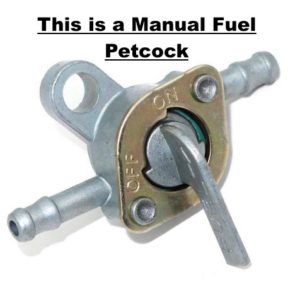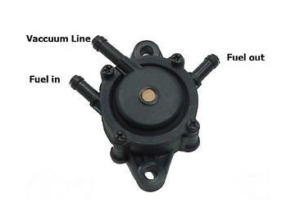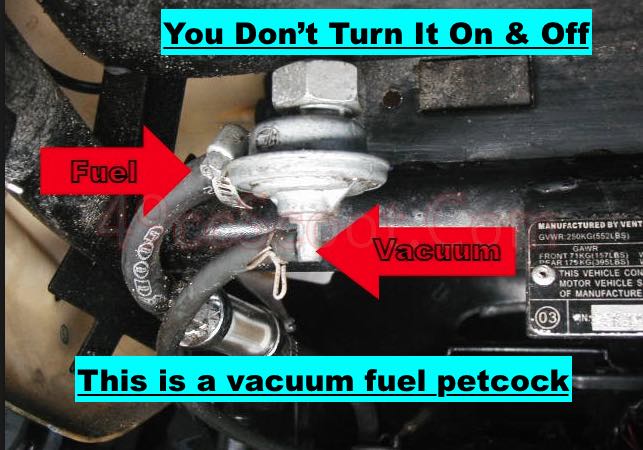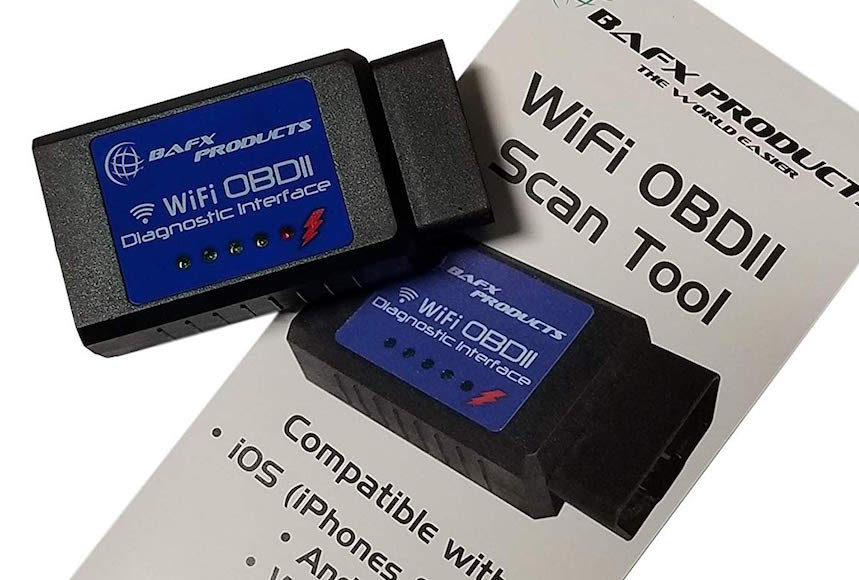Table of Contents
Scooter Overflowing With Gas? Raw Gasoline in the Piston:
An engine may fill with gas if the vacuum fuel pump or vacuum fuel petcock fails, allowing gas to flow through the vacuum line into the engine intake. This means, depending on the configuration of your engine, gasoline can even fill up to the valves. You may notice your scooter or motorcycle is having trouble starting, is running extremely rough (rich), and/or in the most severe case, the entire piston fills with gasoline after sitting overnight.
The easiest way to fix this is to check to see if the vacuum fuel petcock is faulty. These vacuum on/off switched valves/petcocks can be found on everything from GY6 Scooters to Kawasaki Mules. From motorcycles to generators.
Symptoms of a bad vacuum fuel pump/fuel petcock:
- If you smell or see gas in the vacuum line on the petcock then it is for sure bad.
- The first symptoms of a failing fuel petcock (remember this only applies to vacuum regulated ones):
- Your engine will start running really rich.
- You can tell if it is running rich by pulling the spark plug. Is the spark plug tip completely black? Is your scooter suddenly popping a lot or backfiring more than normal?
- Or in the cause of a vacuum fuel pump, it won’t start at all (no gas).
- If it starts running really rich, almost out of nowhere (you had changed nothing recently). It most likely is your fuel petcock. This is because the problem has nothing to do with a carburetor being dirty or a float bowl not adjusted properly.
- If you don’t understand how the vacuum fuel petcock works, and how to diagnose it keep reading. To see on Amazon what one looks like click here for a fuel petcock, and here for a fuel pump (both use vacuum).
- Your engine will start running really rich.
Manual Fuel Petcock vs. Vacuum Fuel Petcock/Pump:

Ever heard of a vacuum regulated fuel regulator?
Aka vacuum fuel petcock, or vacuum fuel pump.
They all basically function the same way.
The vacuum pulls on a diaphragm either letting gas flow via gravity or via pumping of the diaphragm.
Both work somewhat differently, but they both can fail and cause similar symptoms. Usually, it shows up as your scooter, ATV, or quad to run rich out of nowhere.
For me, it showed up on my 1986 Honda Elite Scooter as it started to run super rich. I barely could ride it, and it even wasn’t starting right. Then after I let it sit overnight, the entire piston had filled with gas.
Liquid gas was literally pouring out of the top of the engine.
How to tell if you have a vacuum fuel petcock:
How to tell if you have a vacuum fuel pump:

When a vacuum fuel pump or regulator fails, gasoline starts to be sucked through the vacuum line back into the engine. Now you have way more gasoline entering the cylinder and causing a very rich running condition even though you can’t find anything wrong with your carb.
Vacuum fuel pumps also commonly fail, which is easily diagnosed by your engine not starting and not getting fuel.
You can simply pull the fuel line from the fuel out, and see what happens when you crank over the engine.
Does any fuel come out?
If not then most likely the diaphragm inside is bad. Super easy to check, and super important to make sure it is working right if you’re getting a no start on your engine (motorcycle, scooter, ATV, gy6, whatever it is).
Please, don’t be like me and spend hours taking the carb apart and scratching your head before you remember the vacuum fuel pump.
Still confused on how vacuum on-off fuel regulators work?
Heres a video I made a couple of years ago about vacuum fuel pumps, but it may help you figure it out. I made it because there wasn’t any other video online that clearly explained to me how they worked.
It would’ve saved me a ton of time had I known how to test and diagnosis a vacuum fuel pump before I made that video.
It’s also only a minute long– you can do it.
More Explanation Of How To Check Your Fuel Petcock:
How You Can End Up With A Piston Full Of Gas:
What happens is that the fuel leaks down past the gasket in the fuel vacuum petcock. It shouldn’t be able to get past this barrier, and once it does start happening that fuel finds itself into the engine compartment.
The easiest way to test if your vacuum fuel petcock is causing the run too rich symptoms in your scooter/motorcycle is to pull the vacuum line at the bottom of the fuel petcock.
If you see gas dripping out or smell gas coming out of that line, then you have a problem. Do not overlook this, it happens constantly and it happened to me today.
The 30+ year motorcycle mechanic that was helping me, didn’t even think to think about it. Literally, my entire piston was filled with gas, up to the valves.
I was lucky to not hydro lock my engine on my scooter because I was trying to get it to start while the piston was full of gas.
How can a bad vacuum fuel petcock can hydro lock your engine?
The scooters starter was too small and not strong enough to push the piston up against the pressure of the liquid gas. In a car, it would of hydro locked in a second and this does happen. Injectors get stuck open and can fill or drop a cylinder full of gas. When the person goes to start their car, because it is a much stronger starter it will bend the piston.
I was super lucky that the starter wasn’t strong enough to break my piston.
How To Fix A Cylinder That Is Full Of Gas:
1. Start by emptying out the gas from the tank. You will likely have to take the tank off to get to the vacuum fuel regulator anyway. Remove all the gas you can from the tank. Safely dispose of it or store it for use later.
2. Do not try to start the engine with the gas in the cylinder. If your starter is strong enough it will bend your piston rod.
How to get the gas out of the cylinder:
- To do this, remove the spark plug and make sure no spark will happen when you do the next step (easiest way is to make sure the spark plug is not in the wire after removal).
- Now turn the bike over while the spark plug is out. Gas will come shooting out the spark plug hole at high pressure. DO NOT GET SPRAYED IN THE FACE. It will give you a nice chemical peel (people pay a lot of money for that these days). All joking aside, it will spray gas like 5-10 feet so please do this somewhere safe.
- Once all the gas is gone, leave the plug out for a couple more minutes while you do other stuff so the cylinder can dry out as much as possible.
4. Next, get access to the vacuum regulated fuel pump or petcock and see if it is bad.
- There are several tests you can do in order to tell.
- The most obvious is just gas coming out of the vacuum line
- Watch my video again if you’re confused.
- If you have a vacuum fuel pump, watch my video again (linked above) and follow the steps in the video
- basically you want to pull the line where fuel should be shooting out the pump while trying to crank the bike over. If you see no fuel coming out of the lines then either there is a plug in your fuel line. Your fuel filter could be clogged. Or you have a vacuum leak on your tube. If all those things aren’t the cause, then the internal diaphragms inside the fuel pump are bad. This means your engine is getting no fuel. Replace the part.
Once you know the fuel petcock is bad:
Replace either the fuel petcock with a manual one if you can, or buy the original part from the manufacturer. For some scooter, it will be hard to replace it with a manual petcock, and not worth the time.
6. Once you have the new part on, replace the spark plug and change the oil. The oil will be contaminated with gasoline and no good.
7. Start her up, and notice how she isn’t running insanely rich anymore.
On my scooter, the vacuum fuel regulator was installed directly on the gas tank. I luckily found another Honda Elite to take a part off in the junkyard behind the mechanic’s shop.
Without that, I would’ve been off the road till I could get the part ordered.
Quick Reminder: MAKE SURE TO DRAIN THE OIL.
If your piston was filled with gas, you need to change the oil.
Why?
Gas is great at leaking past the piston rings and then contaminating the oil.
You can tell this has happened to your oil if it is suddenly way more full than you remember.
It will also smell like gas. lol.
Today, when I took the carb off my honda elite scooter and I got a clear view into the intake valve there was raw liquid gas sitting on top of it. The cylinder was also full to the brim. This means over time that gas is dripping down past the piston rings and mixing with your oil.
Once you are sure that you have got all the gas out of the piston then drain the oil and refill it with some fresh oil.
Running oil that is contaminated with gas will cause you a real problem as the oil will not work effectively.
It is better to be safe than sorry. Just change the oil.
Conclusion:
Whenever you have something that turns on and off or pumps fuel using engine vacuum the potential for it to start sucking gas into the vacuum exists. This can either be a run rich situation, that no changing the carb will fix. Or it can literally mean your engine filling with gasoline.
Remember with all automotive repair KISS (keep it simple stupid). It may not seem like the simplest answer but once you think about it it starts making logical sense.
Here is how my thought process should have gone if I remember how these fuel petcocks work:
My carb was running perfectly fine yesterday. Now my bike is running insanely rich. I checked the carb, I don’t even see gas coming out of the overflow tube.
Where else can gas enter the engine from?
Oh, well if I follow the gas inlet line from the carb backward I find this weird mini UFO looking disc thing.
That must be where the gas comes from. Also, there is this other line that goes into the fuel petcock and when I follow that it is coming from directly between the carb and the head.
Crazy, I pull off the vacuum line at the fuel petcock and there is gas dripping out. Well, I know that can’t be right. There shouldn’t be gas coming from my vacuum line.
I should probably replace this vacuum fuel thing with either a manual petcock or a new vacuum pump/regulator. It makes perfect sense now why I was running so rich. Gas was leaking back through the vacuum line, and overnight was able to fill up my entire engine with gas.
If you still aren’t sure what I am talking about when I say vacuum fuel pump versus vacuum fuel regulator keeps reading.
In this video where I explain how a vacuum fuel pump works, you clearly see a vacuum fuel pump on the scooter (GY6):
You can also clearly see how there is one vacuum line (on this fuel pump it is directly in the middle) and two fuel lines. The fuel lines are an inlet and an outlet line.
If you disconnect the outlet line and try to start the scooter you should see gas shoot out under pressure. If you see no gas, and there are no vacuum leaks then the fuel pump is bad. Watch the video to see it in action.
Vacuum Fuel Petcocks Aren’t Fuel Pumps:
A vacuum fuel petcock doesn’t actually push fuel or pressurize it in any way. It can be replaced with a fuel petcock. Since all it really is doing is simplifying the on-off part of a manual petcock.
Scooter On = Engine Vacuum Created = Gas flows Through Fuel Petcock
Scooter Off = No Engine Vacuum Remaining = Gas Stops Flowing To The Carb
These usually have one line going to them that is engine vacuum. Usually drawn from the boot between the carb and the engine head.
Fuel regulator also has a line that is fuel going to the carb. Only when there is vacuum applied to the unit should there be glass flowing through the line.
Very easy to test if it is working right, even by sucking on the vacuum line and seeing if gas flows through the gas line.
Hand pump vacuum gauges can be a lifesaver:
can be a lifesaver:
They work great for diagnosing anything with a diaphragm (fuel petcocks, fuel pumps, EGR valves, etc). Do not trust that your lungs are capable of creating enough vacuum.

Also, I hate drinking gas or breathing in fumes directly through a piece of tubing.
No thanks, I’ll take the “being less manly” card.
I had a sense of accomplishment today. My scooter went from overflowing with gas to riding down the road at 60 mph.
All because I went through the steps of diagnosis, and then remembered I had missed some vitals clues.
Sometimes you get to luck out. I hope this helps you if you’re battling a rich condition, or gas coming out of all kinds of weirds spots.
The guy down the street that told you it was for sure your carb float. Yeah, he’s wrong. Way simpler dude!
If you want to read my article on the best ratchets of 2018 click here.








Pingback: "FastC" Method Of Diagnosing Any No Start / Runs Poorly Engine - AGradeTools.com